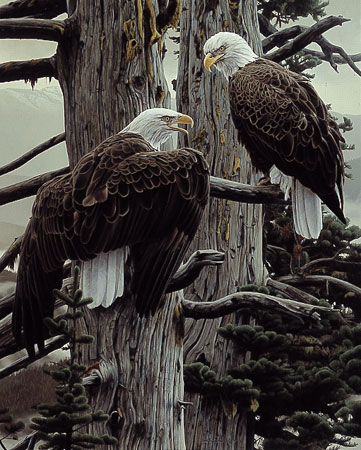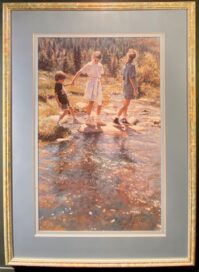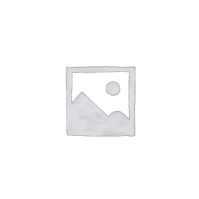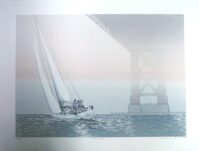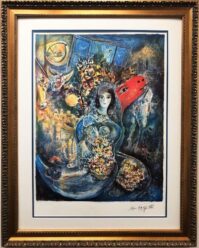Nesting Call-Eagles by Rod Frederick -Remarqued Artist Proof
$250.00
Description
Rod Frederick – Nesting call –Remarque Edition,Artist Proof…$250 Release Year: 1987 Size (inches): 28 x 22.25
Form: limited edition print on paper with printed remarque. Consigned by the artist. Edition Size: 1000 numbered and hand signed by the artist
When the fledgling United States government chose the American bald eagle as the national symbol in 1782, an estimated 50,000 of the birds lived in North America. By the late 1960s, the bald eagle population had tumbled to 1,500 individuals. Use of pesticides, hunting and destruction of habitats had brought the symbol of American national pride to the brink of extinction.
The bald eagle is a large, powerful, easily recognized predator. But beyond their grace and beauty, bald eagles do an important job in their habitats. Their diet consists mainly of fish, supplemented by rodents and some scavenging. Unlike humans who want the healthiest, most unblemished fish, eagles don’t discriminate. More often than not, eagles weed out the sick, weak and old. The species of fish, such as salmon, that bald eagles prey upon are constantly improved because only the strongest members live to pass on their genes.
By helping the rodent populations, bald eagles do an even more directly valuable service for their human neighbors. The damage that rats, mice and rabbits can do to crops is immense and can have far-reaching deleterious effects on how we live. Even scavenging, unglamorous though it is, is important for a clean habitat.
About Rod Frederick
Born in Salem, Oregon, Frederick’s fascination with animals stems from his childhood. When he was a second-grader, he was given a copy of the late Roger Tory Peterson’s Field Guide to the Birds. The appreciation he developed for the wilderness early in his life has never waned; it has continually intensified. He finds that when he’s painting, he can’t wait to get back into the wilderness to observe animals. When he’s outside, surrounded by nature, he’s anxious to get back to his studio so he can paint it.
“Often,” he says, “I’ll look for a particular species, and what I’ll see is something totally unexpected. The unpredictability of seeing animals in the wild is as exciting as actually seeing them — it’s what I call planned unpredictability. And when you do see what you’ve planned, it’s serendipity.”
At Willamette University, Frederick majored in art and minored in biology. He sculpted and experimented with different media, developing his unique style on his own.
When in the field, Frederick takes many photos of the animals and their environment. These are followed by thumbnail sketches to accompany his notes. Once in the studio, he assembles his photos to help him to fill in the details. But it is the memory of the actual experience in the wild and the emotions connected with it that generates the idea, firing the creation of the painting.
After stretching the stiff Belgian linen he uses exclusively, he begins by drawing the background landscape on the canvas. He then draws the animals on separate pieces of paper so that he can superimpose them, moving them around until he achieves the ideal composition. Using primarily oils and gouache, he adds layers of glazes to attain tighter detail and the atmospheric effect of transparent colors. A large painting usually takes about one month to complete.
Rod Frederick was the first-ever Featured Artist at the prestigious Pacific Rim Wildlife Art Show. There is complexity in his work with the light, perspective and atmosphere intermingling to set the stage. The result is not merely a scene, but an entire drama. Often, different species unobtrusively share top billing with the star attraction, as all of the characters interact with the habitat. Only someone who has scaled the heights and ventured into the unknown can capture the mood associated with such moments, and because Frederick has, his paintings have the power to transport you.
